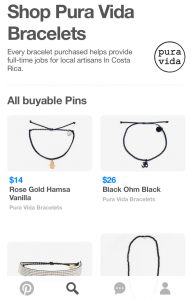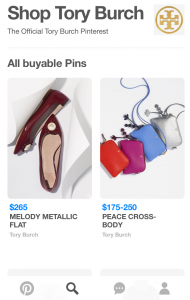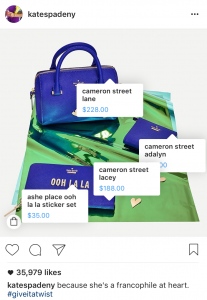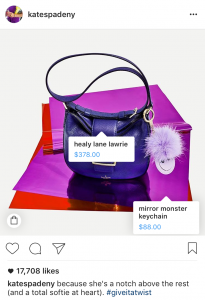Post Updated December 2016
These days it seems as though almost everyone has an ecommerce website. “Buy my ebook,” ”look at this new featured product,” “our fall line is in,” seems to be ubiquitous across platforms. If you’re part of this ecommerce renaissance, then providing a seamless experience is key. It’s all about the conversion and what you can do to increase those numbers.
Driving traffic to your website is the first step in this journey, and social media can play an important part. With the recent increase in product features on social media channels and options for brands, this aspect of promotion is more important than ever. Paid campaigns can strengthen your presence as well and hopefully increase that all important conversion rate.
Establish a Social Media Presence
The first step to a solid social media campaign is first establishing your presence on social media. One cannot open up an Instagram account and expect booming sales and hour later. But before you can even post, tweet, or pin it’s important to know which social platforms to have a presence on. Do a little research and find the platforms that perform the best for your niche. Then invest, post photos, share clever captions, and show the experience of your brand. You don’t need to be on every platform and if you find that one is more relevant than another, invest more in the profitable one. Focus on what works and with a little time you’ll have a relevant audience built up.
Continue to update throughout this whole process by keeping your loyal customers in the loop on new products, special promotions, and more. Visually appeal to those who follow you if you offer highly visual products. Take advantage of trends like lay-flat photos and stylization of images to create a cohesive experience.
Include Links to Your Products
Now that you’ve built up a presence on your preferred social media channels it’s time to promote your actual products. Using appealing images is the first step of this but next you’re going to want to make sure that you include links to featured products as well. There are several ways to do this depending on your platform. Just make sure not to weigh down all your posts with links, followers may get annoyed with too much promotion.
Buyable Pins
For some time now, Pinterest users have been able to buy products directly from the Pinterest app creating a cohesive user experience. Sure, you’re more than able to add links to pins of your products to direct users to your website but buyable pins take this a step further. Buyable pins allow you to upload product lists and pricing into their system and create a different experience without spending money. Several big ecommerce platforms already have easy ways to directly integrate this including BigCommerce, Demandware, Magento, and Shopify. If you have products that you’re featuring on Pinterest this option may be the right one for you.


Links on Instagram
There are many apps and websites that help you sync your product features on instagram to your actual shop. Many allow you to list a single URL in your profile description for users to click on. This URL when clicked on brings users to a page where products are directly connected to posts.
These are great options but Instagram has recently started testing shoppable photo tags. Instead of tagging a user, brands are able to tag products. Users can then tap on the photo to view the tags and see pricing. Users are then able to directly purchase in the app much like Pinterest’s buyable pins option. This option is being slowly rolled out and is currently not monetized but may be at some point.
 r
r
Invest in Paid Social Media
While there are solid options (as mentioned above) for brands to feature their products in an organic and free way. Paid social media ads are one of the top ways to really draw in users and get them to purchase. Basically any social media you may find your brand on has options to purchase ads and feature products.
Facebook has dynamic ads that allow you to promote your products across their platforms and create highly targeted campaigns. Pinterest allows you to promote pins including buyable pins and target users who may not follow your board. Twitter had their own ads platform which can be geared towards products as well, especially on the mobile app. Instagram in addition to working on their shoppable photo tags has an open ad platform where brands can feature products and include a shop-now banner. With a little time spent learning you’ll be able to create a solid paid social campaign to boost your product sales.
Involve Your Brand Community
Featuring customers is an easy way to get eyes on your product while also organically growing your following. If you share a photo of a customer using your product chances are they will share it with their followers. You can almost double your reach organically by just simply featuring those who already love your product. This genuine interaction is more appealing on social media and helps you cultivate a real community.
Showcasing what you’re doing as a business in your own community can help as well. By featuring employee activities, other local businesses, and your town as a whole you’ll not only cultivate a spirit of community around your brand but a loyal following. Show the real story of your company through these genuine interactions and the algorithms used in social media will be pleased.
So as you learn how to grow your audience and feature products through your social media it’s important to keep all your interactions genuine and listen to your audience. Put a little paid media behind your efforts and your products will be flying off the shelves in no time.
